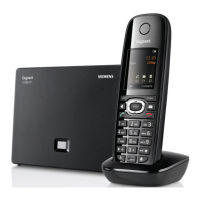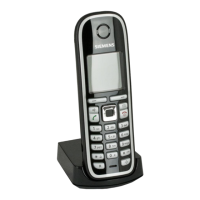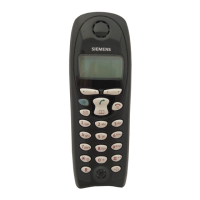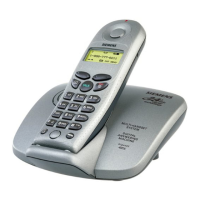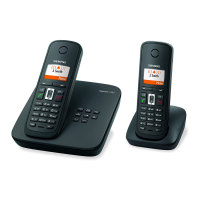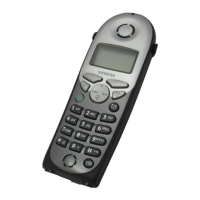142
Web configurator – configuring the telephone via a PC
Optimising voice quality for VoIP connections
Gigaset C470-C475 IP / GBR / A31008-M1916-L101-1-7619 / web_server.fm / 7.2.08
Version 2.1, 08.01.2007
Area: Settings for Connections
In this area you can make specific settings for each of your VoIP phone numbers.
You can make the following settings for each VoIP phone number configured on your
phone:
Volume for VoIP Calls
Depending on the VoIP provider, it is possible that the received voice/earpiece volume is
too low or too high, so that adjusting the volume via the handset is not adequate.
Specify whether the received volume range is too high or too low. The following options
are available:
Low
Voice/earpiece volume is too high. Activate this option to reduce the volume by 6 dB.
Normal
The voice/earpiece volume does not need to be raised/lowered.
High
Voice/earpiece volume is too low. Activate this option to increase the volume by 6 dB.
Voice codecs
Precondition: The Own Codec preference option is activated for the Voice Quality in the
Settings for Bandwidth area.
Select the voice codecs your phone is to use, and specify the order in which the codecs
are to be suggested when a VoIP connection is established via this VoIP phone number.
¤ Apply the voice codecs that your phone is to suggest with outgoing calls into the
Selected codecs list.
To do this, in the Available codecs list click the voice codec that you want to apply (you
can mark several entries using the Shift key or the Ctrl key). Click <Add.
¤ Move the voice codecs that you do not want the phone to use into the Available codecs
list.
Also, select the voice codecs in the Selected codecs list (see above) and click Remove>.
¤ Sort the voice codecs in the Selected codecs list into the order in which they should be
suggested to the receiving device when a connection is established. To do this, use
the Up and Down buttons.
When establishing a VoIP connection, the phone suggests the 1st voice codec in the
Selected codecs list to the receiving device to begin with. If the receiving device does not
accept the codec (e.g. because it is not supported), the 2nd voice codec on the list is
suggested, and so on.
If the receiving device does not accept any of the voice codecs in the Selected codecs list,
the connection is not established. An appropriate message will be displayed on the
handset.
Please note:
– You should only deactivate codecs (put them in the Available codecs list) if there is a particular rea-
son. The more codecs that are deactivated, the greater the danger that calls will not be able to be
established due to unsuccessful codec negotiations.
– With incoming calls, all supported voice codecs are always permitted.

